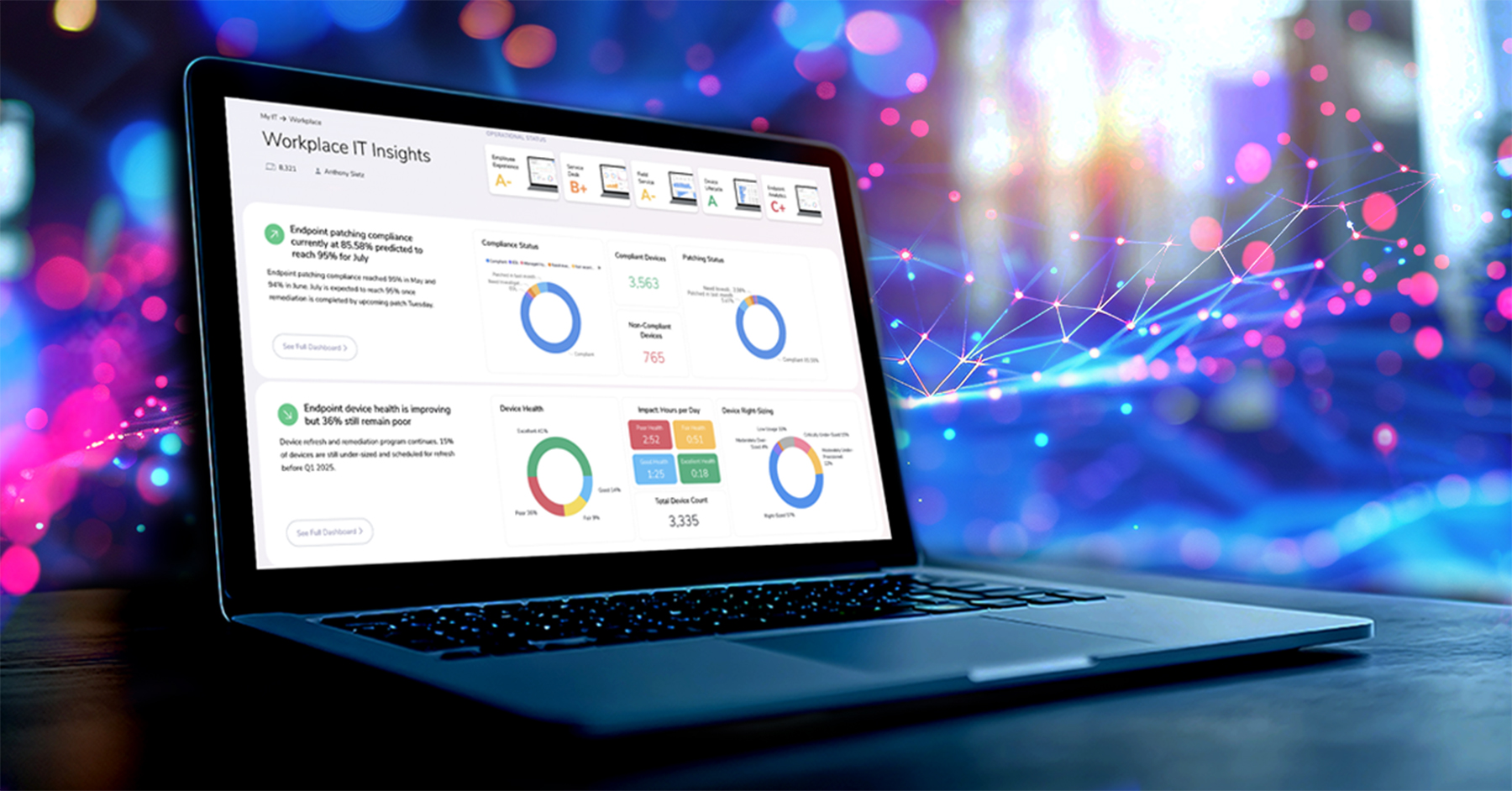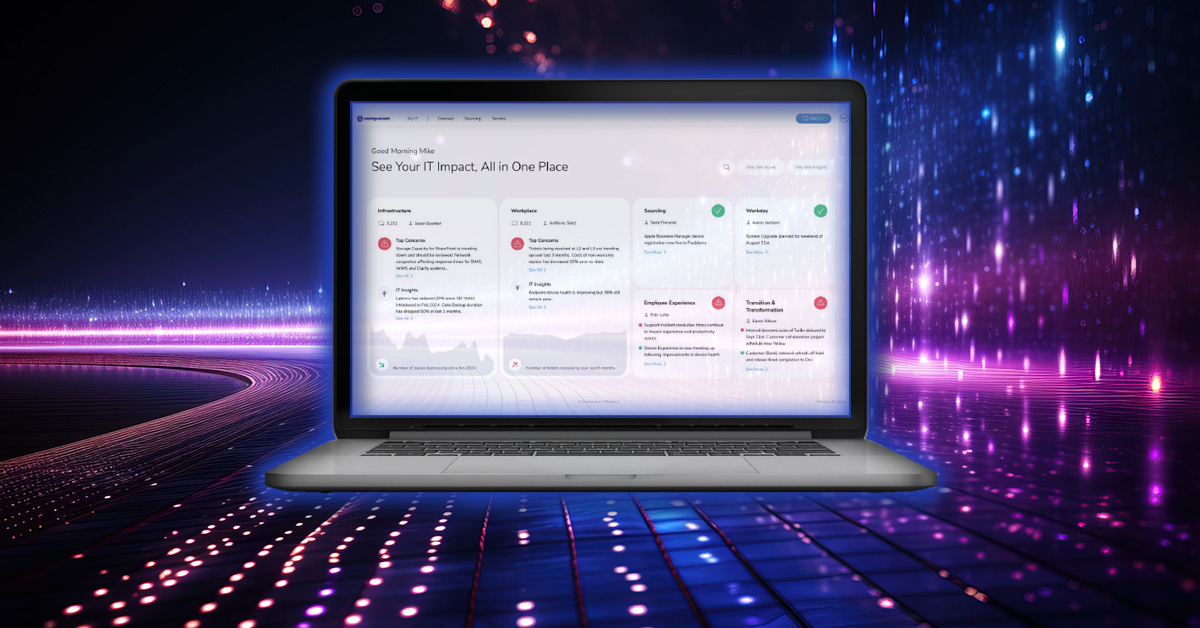- Device Lifecycle Services
- Data Security


Jennifer Brooks • Senior Director of Operations
How IT Asset Disposition Drives Data Security and Sustainability
Every year, organizations discard millions of tons of outdated equipment. If not handled correctly, your old devices could become a security Achilles heel, damaging your reputation and your brand.
With the average cost of a data breach in the United States topping $9.44 million in 2022, almost double the global “all-time high” average of $4.35 million, it’s critically important that none of the information stored on old computers, servers, tablets, smartphones, or printers falls into the wrong hands.
There are three major tenets of a proper IT Asset Disposition (ITAD) process:
Having these in place helps safeguard our customers’ data and protect their reputations while simultaneously promoting and adhering to sustainability goals and best practices.
Detailed Chain of Custody
Protecting your retired devices’ data means keeping track of where they are and controlling access. From when devices leave your hands to the end of disposition, it’s essential to have a detailed chain of custody and extra measures such as secure packaging and shipping with vetted freight carriers.
Our customers trust us with their assets, data, and network access, and we don’t take that lightly. We have Advanced Configuration Centers in Paulsboro, New Jersey, and Markham, Ontario, that are central to our overall device lifecycle services. From procurement through delivery and ending in secure disposition, we treat all asset data as proprietary and confidential and ensure the integrity of a well-documented chain-of-custody process.
Facility Security
A tightly controlled environment is a crucial aspect of any facility dealing with your IT assets. Some examples of risk mitigation we use include:
- Perimeter alarm system monitored by a central station
- Metal detectors, camera surveillance, and a 24/7 on-premises security team
- Strictly enforced access and visitor policies
- Required background checks and regular training for all personnel
Who enters the facilities is limited by key-card access. Customer assets are in alarm-protected segregated areas; the system is triggered by any attempted entry by an unauthorized individual. We ensure visitor escorts accompany customers, truck drivers, or third-party vendors who need access. All visitors are accounted for — a visitor sign-in log maintains visibility of who enters the building at any time.
Data Security
For customers with assets that still have market value or hard drives, they plan to redeploy, an ironclad data wipe renders data scrambled, leaving no traces of the original data to be recovered. Any facility with disposal methods should present customers with certificates of destruction. This allows customers to hold their facility partners accountable, as well as keep a record of their devices.
Protecting corporate identity is top of mind for us. And the devil is in the details. For example, we ensure the removal of asset tags and other identification labels before disposition.
The Compucom Difference
Electronics are the fastest-growing solid waste stream in the US and are 70% of the toxic waste, yet less than a quarter of it is recycled. Keeping as much e-waste as possible out of landfills helps meet organizations’ sustainability goals and enhances a brand’s reputation.
Compucom’s Advanced Configuration Center in Paulsboro, NJ, maintains environmental standards through stewardship programs like the ISO 14001 Environmental Management System. This program encompasses a framework designed to minimize a facility’s impact on the environment, help reduce the risk of pollution, and meet local, state, and federal regulations.
Reducing e-waste is a key component of IT sustainability, and one way to do this is by identifying devices with resale value. A perk is the extra income your company can make from reselling devices, which can help offset your cost of buying new technology. Devices that no longer have value and cannot be resold are transferred to a certified partner for EPA compliance, eco-conscious disposal, and e-waste recycling.
Don’t Let Old Devices Come Back to Haunt You
While many organizations focus on implementing new technology, what happens to the devices you replace is just as important. Improper IT asset disposition can lead to data breaches and damage your brand reputation. Proper recycling supports your sustainability initiatives and helps keep dangerous e-waste out of landfills.
Reach out to learn more about ITAD security and sustainability methods and hear how Compucom’s Advanced Configuration Centers can help you reach your goals.
RecenT

9 Ways Strategic IT Staffing Empowers Organizations

Case Studies: Asset Intelligence and Endpoint Compliance Made Easy

AI and the Enterprise: The Future of IT Management

Exploring the Opportunities and Obstacles of AI in the Enterprise

One Dashboard to Rule Them All: Strategic IT Excellence with Full Lifecycle Observability

Transforming IT Operations with Full Lifecycle Observability: How Compucom’s FLO Framework Redefines Data-Driven Efficiency
TOPICS
Protect Your Brand: Don’t Let eWaste Become Your Achilles Heel
- Device Lifecycle Services
- Data Security

Jennifer Brooks • Senior Director of Operations
How IT Asset Disposition Drives Data Security and Sustainability
Every year, organizations discard millions of tons of outdated equipment. If not handled correctly, your old devices could become a security Achilles heel, damaging your reputation and your brand.
With the average cost of a data breach in the United States topping $9.44 million in 2022, almost double the global “all-time high” average of $4.35 million, it’s critically important that none of the information stored on old computers, servers, tablets, smartphones, or printers falls into the wrong hands.
There are three major tenets of a proper IT Asset Disposition (ITAD) process:
Having these in place helps safeguard our customers’ data and protect their reputations while simultaneously promoting and adhering to sustainability goals and best practices.
Detailed Chain of Custody
Protecting your retired devices’ data means keeping track of where they are and controlling access. From when devices leave your hands to the end of disposition, it’s essential to have a detailed chain of custody and extra measures such as secure packaging and shipping with vetted freight carriers.
Our customers trust us with their assets, data, and network access, and we don’t take that lightly. We have Advanced Configuration Centers in Paulsboro, New Jersey, and Markham, Ontario, that are central to our overall device lifecycle services. From procurement through delivery and ending in secure disposition, we treat all asset data as proprietary and confidential and ensure the integrity of a well-documented chain-of-custody process.
Facility Security
A tightly controlled environment is a crucial aspect of any facility dealing with your IT assets. Some examples of risk mitigation we use include:
- Perimeter alarm system monitored by a central station
- Metal detectors, camera surveillance, and a 24/7 on-premises security team
- Strictly enforced access and visitor policies
- Required background checks and regular training for all personnel
Who enters the facilities is limited by key-card access. Customer assets are in alarm-protected segregated areas; the system is triggered by any attempted entry by an unauthorized individual. We ensure visitor escorts accompany customers, truck drivers, or third-party vendors who need access. All visitors are accounted for — a visitor sign-in log maintains visibility of who enters the building at any time.
Data Security
For customers with assets that still have market value or hard drives, they plan to redeploy, an ironclad data wipe renders data scrambled, leaving no traces of the original data to be recovered. Any facility with disposal methods should present customers with certificates of destruction. This allows customers to hold their facility partners accountable, as well as keep a record of their devices.
Protecting corporate identity is top of mind for us. And the devil is in the details. For example, we ensure the removal of asset tags and other identification labels before disposition.
The Compucom Difference
Electronics are the fastest-growing solid waste stream in the US and are 70% of the toxic waste, yet less than a quarter of it is recycled. Keeping as much e-waste as possible out of landfills helps meet organizations’ sustainability goals and enhances a brand’s reputation.
Compucom’s Advanced Configuration Center in Paulsboro, NJ, maintains environmental standards through stewardship programs like the ISO 14001 Environmental Management System. This program encompasses a framework designed to minimize a facility’s impact on the environment, help reduce the risk of pollution, and meet local, state, and federal regulations.
Reducing e-waste is a key component of IT sustainability, and one way to do this is by identifying devices with resale value. A perk is the extra income your company can make from reselling devices, which can help offset your cost of buying new technology. Devices that no longer have value and cannot be resold are transferred to a certified partner for EPA compliance, eco-conscious disposal, and e-waste recycling.
Don’t Let Old Devices Come Back to Haunt You
While many organizations focus on implementing new technology, what happens to the devices you replace is just as important. Improper IT asset disposition can lead to data breaches and damage your brand reputation. Proper recycling supports your sustainability initiatives and helps keep dangerous e-waste out of landfills.
Reach out to learn more about ITAD security and sustainability methods and hear how Compucom’s Advanced Configuration Centers can help you reach your goals.
Recent Blogs

9 Ways Strategic IT Staffing Empowers Organizations

Case Studies: Asset Intelligence and Endpoint Compliance Made Easy

AI and the Enterprise: The Future of IT Management

Exploring the Opportunities and Obstacles of AI in the Enterprise

One Dashboard to Rule Them All: Strategic IT Excellence with Full Lifecycle Observability




